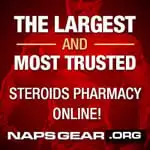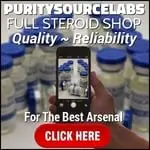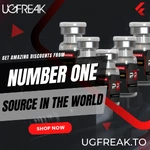OMEGA said:Thanks WB
Anytime brother!!
OMEGA said:Thanks WB
gjohnson5 said:I ordered some of the nighttime diarginine malate from Legal Gear. AAKG is outdated as there is a new chemical that supposedly works 2:1. If anafit would come out with something I wouldn't have to experiment
d3track said:citrum malate?
or however its spelled
i like just buying bulk AAKG
i just felt that i had more blood flow, ready to hit the weights
supposedly combining the two is supposed to be pretty good
therobber said:anybody stack no2 with creatine?
sawastea said:From: http://www.health-strategy.com/cont...ils.php/id/1238
Health Strategy Consulting Interviews
Another Opinion
November 18, 2004
The press release that was issued by MRI, announcing the results of its studies on NO2® at Baylor University, is emblematic of the selective reporting of sponsored research that often embodies “science by press release” campaigns orchestrated by dietary supplement companies. Several points merit consideration:
1. The results of the studies were in fact presented in large part at the first annual meeting of the International Society of Sports Nutrition, in Las Vegas this past June, published as conference abstracts in the inaugural issue of Sports Nutrition Review Journal (www.sportsnutritionsociety.org)
2. The studies FAILED to show NO2 to be superior to placebo in relation to key outcomes that had been aggressively marketed as benefits a user would enjoy from the product: muscle mass gain, weight (total body mass) gain, fat loss, and self-assessed muscle pump, muscle hardness, and sexual function/performance/desire. Additionally, eight other muscular performance assessments (including muscular endurance and peak aerobic capacity) were performed where again NO2 did no better than placebo. No mention of the product’s “failure” in these consumer-relevant areas/marketing “buttons” was made in the release, and likely will also be excluded from any advertisements describing the results of the studies
3. Duplicitously, the “About NO2®” section makes the statement “NO2 induces vasodilation and creates dramatic increases in lean muscle mass...”, two claims that were not borne out by the Baylor studies. Additionally, the NO2 website still states “Creates dramatic increases in muscle size and strength” and “Generates virtual permanent muscle pump” [emphasis added]
4. The study that compared (single dose) extended-released (ER) vs. non-extended-released [sic] compositions indeed did reveal a limited difference from a pharmacokinetic perspective but one could argue with equal authority that the non-extended-released composition may also exert similar, selective enhancements of muscular performance. Because the study that examined the chronic dosing (8 weeks) with NO2 was compared against an inert placebo, the research made no attempt to quantify the efficacy of the rapid release composition relative to the ER. Had the rapid release composition been the comparator (instead of inert placebo) and displayed similar, limited efficacy, this would have likely further undermined the marketshare of NO2, as its US patent application is limited to claims centered upon controlled (extended) release compositions of NO2’s active ingredient
5. The self-aggrandizing statements of setting a “benchmark” and throwing “down the gauntlet” come after NO2 has been in distribution within GNC stores for almost two years, with nothing but testimonials, seminars, advertisements, and promotions to support “efficacy” until this study had been completed
6. The dose employed in the study—12 g of the supplement/day for 8 weeks—is 1.2-1.5 times that recommended on the label (based on body weight). Using the Suggested Retail Price, this would equate to greater than $200/eight weeks, a cost that seems prohibitive given the limited, single study positive results observed
7. The release makes the statement that Ed Byrd introduced creatine in 1993. Ed Byrd was my co-founder partner at EAS, where we co-introduced creatine in 1993 after I introduced to him the September 1992 Clinical Science research article describing the effects of oral creatine monohydrate supplementation. At EAS our credo was to present and publish all of the data that we obtained from the numerous university clinical studies that we sponsored. It is a deceptive disservice to the consumer to omit relevant findings from this first proof of concept study and creates yet another sizable target for both regulatory agencies and impassioned journalists/critics of the dietary supplement industry.
Anthony L. Almada, BSc, MSc
President and CSO
IMAGINutrition, Inc.
This page contains mature content. By continuing, you confirm you are over 18 and agree to our TOS and User Agreement.

 Please Scroll Down to See Forums Below
Please Scroll Down to See Forums Below 










